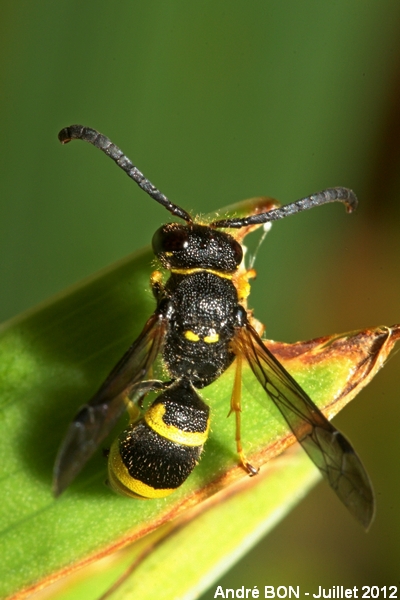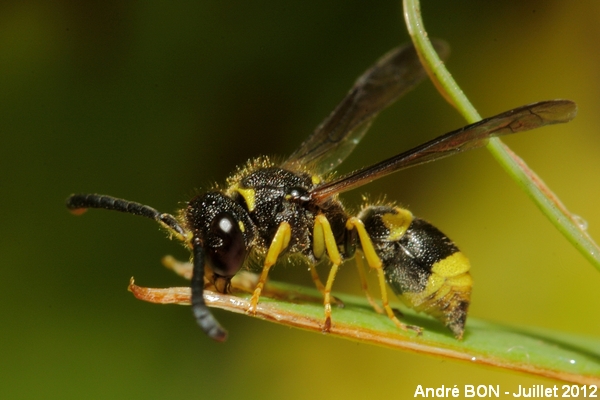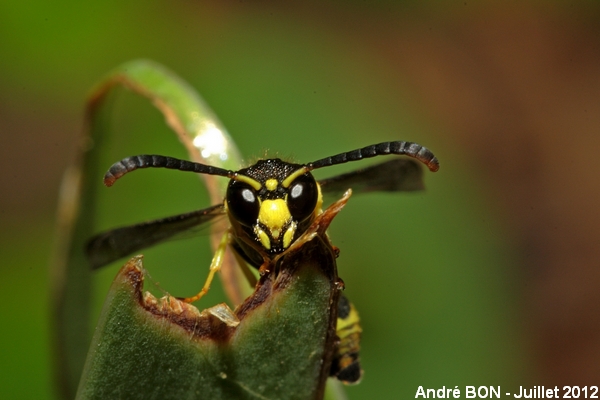


| Ancistrocerus sp. (Wesmael, 1836) |



|
|
Scientific name: Ancistrocerus sp. (Wesmael, 1836) Common name: French name: Order: Hymenoptera Family: Vespidae Wingspan : Females usually measure between 10 and 13 mm, males between 8 and 11 mm. Biotope: Geographic area: This genus is largely widespread, it includes 175 described species worldwide, 19 of them being observed in France. Observation period : |
The solitary wasps of the Ancistrocerus genus belong to the Vespoidea super-family. The first article of the abdomen forms a narrow waist. The pronotum touches the tegula. They belong to the Eumeninae sub-family. They are called potter wasps. These are solitary wasps. You can recognize the Ancistrocerus genus by the presence of transverse keel on the upper side of the first abdominal tergite. These are generally small black wasps with yellow abdominal rings and some yellow markings of the thorax and on the head. Males have antennae of 13 articles and 7 abdominal segments. Females have antennae of 12 articles and 6 abdominal segments. The tip of the antennae is curved on males. Keys to tell species apart are different for males and for females. They are based on the shape of the second abdominal tergite and the shape of the clypeus among other criteria. |
| [To know more about the Ancistrocerus sp.] [Next picture] [Top] |

|
The transverse keel located on the first abdominal segment and typical of the Ancistrocerus genus is clearly visible on this picture. |
| [To know more about the Ancistrocerus sp.] [Next picture] [Previous picture] [Top] |

|
I can count 7 abdominal segments. The tips of the antennae are curved. So this one must be a male. The hind leg is hiding the base of the second sternite. So it will be very difficult (or impossible) to follow the identification key to a final species. |
| [To know more about the Ancistrocerus sp.] [Previous picture] [Top] |

|
Here is a front view. The shape of the clypeus may certainly be used to reduced the number of possible species. However I am intrigued by the number of articles that I am able to count on the antennae. I can count 11 articles while I am expecting 13. Are there short articles, not visible on this picture, at the tip of the curved antennae? |